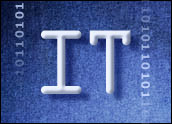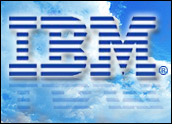
Information technology service management (ITSM) — how IT is delivered inside an enterprise as a service — and a related area, the quickly evolving Information Technology Infrastructure Library (ITIL), form complementary trends that are helping to mature IT as a customer-focused, quality-of-service activity.
IT departments are under mounting pressure — cost reduction, competitiveness of internal IT compared to outsourced services, regulatory compliance, application and infrastructure modernization — that demands that IT processes come under better control. At the same time, IT departments must show more value to the business, to be more agile in IT’s responses to business needs.
To help meet these challenges, newer standards and updated best practices are arriving, especially ITIL v3 in April 2007. To help understand these trends and these new approaches, I spoke with executives from Hewlett-Packard’s services consulting and integration group: Klaus Schmelzeisen, director of the global ITSM and security practices, and Jeroen Bronkhorst, ITSM program manager and also an active participant in the ITIL Version 3 editorial core team, as well as an author of the integrated ITIL process maps.
Here are some excerpts:
On IT Service Management
Dana Gardner: ITIL has been around for quite some time, and ITSM services for management is a bit newer. How did the demand for these services come about, and what are some of the current drivers that are bringing this into the fore for an increasing number of enterprises?
Klaus Schmelzeisen: I’ve been observing the area of ITSM since the early ’90s and, interestingly enough, it really started with the infrastructure piece. At that point in time, corporations were introducing lots of new technologies, especially in the networking environment.
Client-server infrastructures soon came into place. So there was a big need for infrastructure monitoring that, once this was in place, were followed by IT services, which brought a completely different spin. That was to deliver the output of an IT organization as a service to the business. That’s where ITSM started big time. Around the mid-’90s and since then, standards and best practices have evolved.
On one side, the old challenges are still here. We see new technologies. We see the need for new services coming up. But there are also a lot of drivers that are putting pressure on the IT department. There are organizations that have an increasing need to demonstrate the level of quality that they are providing to their customers. Demonstrating their role and their certification helps to establish them internally against a competing approach, but also gives them more credibility if they want to take these services to an extended enterprise approach.
On ITIL and Its new Addition
Jeroen Bronkhorst: ITIL originated in the ’80s actually. It was created by the British government, which still owns ITIL. It’s a set of books that describes best practice guidance in the area of, “How do I organize the operational processes that help me manage my infrastructure and he help me manage my IT services?”
When it was created in the ’80s, it initially consisted of more than 30 books. They were condensed in the ’90s down to eight books, and that’s basically the set that exists today. However, as we’ve seen the technology and the needs evolve, the British government is driving a project to further condense ITIL down to five books. This will better link it to the needs of businesses today, which will then help customers to get themselves organized around the life cycle of IT services, being able to create new services, define them, build them, test them, bring them into production and take them out of production again once they’re no longer needed.
If I look at the traditional impact of ITIL, I would say that it is typically targeted at the operations department within an IT organization, the area where all the infrastructure and applications are maintained, and where, as a user, you would interact most on a daily basis.
What’s happening with the new ITIL v3 is that the scope of these best practices will be significantly improved, and ITIL Version 3 will be more focused on how you organize an IT organization as a whole. In other words, taking an integral view of how to manage an IT service that consists of applications, infrastructure components, hardware, etc. This means it will be a much bigger scope of best practices compared to what is it today.
I would classify ITIL Version 3 as a major release. I say that not because it is changing things from ITIL as it exists today. One of the basic underlying designs is that it builds on the principles that exist in ITIL today. The reason I’m saying it’s a major release is because it’s adding so much more to the scope of what ITIL covers, plus it completely restructures the way in which the information is organized.
What do I mean by that? In the past, when you looked at the ITIL books, they were focused on topics that made sense to the people who work within the IT organization. Application management, infrastructure management, software asset management are all topics that make sense from an IT internal view. But few people who look at IT from the outside care about how you do it, as long as they get the service that they have agreed on with you.
The new ITIL will be organized around five phases of the service life cycle, starting with strategy. How do you handle strategies around services, followed by how do you design a service, and how do you then transition that service into operations? Service operation is the fourth phase, and then the last phase is all about how to continuously or continually improve service delivery. That will be a major change, especially for people who are familiar with the current ITIL in the way in which it is structured.
On ROI From ITSM
Schmelzeisen:The usual metrics [to measure ITSM results] are cost reduction. For example, one of our big customers, DHL, reports 20 percent cost reduction since it implemented their IT processes. We have other cases where they are looking at a total return on investment (ROI) that includes efficiency gains, as well as staff reduction, improved quality. That showed a break-even for one of our clients, Queensland Transport, the government agency in Australia, in the second year, and an ROI of 400 percent in five years.
There are other measurements, like decreased amount of rework, decreased response time, how many calls you can solve on the first call. All these measurements are coming together. Alcatel-Lucent in the U.S., for example, is showing very good returns in terms of quality improvements, as well as things that are much less tangible, like facilitated consolidation of all systems and their subsequent decommissioning.
So there are very tangible measurements, like cost reduction, the number of call resolutions, and things like that — quality improvements. And there are less tangible ones, like how quickly you can get rid of older environments, how quickly you can consolidate, etc.
You can deploy IT service management to very small organizations as well. There might be one significant change — the need for automation. My experience is that this grows with the size of the organization. So if you are a 170,000-person company with a huge IT department, you ought to have automated processes. This obviously means the processes need to be standardized and well understood, and people need to be trained on it.
If you are a 10-person IT department, you still have to have processes, but probably if you are such a small group, and you might even be located in one place, you can still do this without automation, using more basic tools, even on paper. Nevertheless, the need to understand your processes and have them well defined is independent of the size of the company.
Dana Gardner is president and principal analyst at Interarbor Solutions, which tracks trends, delivers forecasts and interprets the competitive landscape of enterprise applications and software infrastructure markets for clients. He also producesBriefingsDirect sponsored podcasts. Disclosure: Hewlett-Packard is a sponsor of BriefingsDirect business productivity podcasts.









































Social Media
See all Social Media